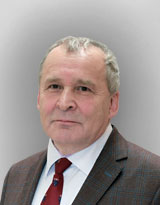Вам может быть интересно:
Архив журнала
ТОРЖЕСТВЕННАЯ ЦЕРЕМОНИЯ ВСТУПЛЕНИЯ В ДОЛЖНОСТЬ ПРЕЗИДЕНТА РОССИЙСКОЙ ФЕДЕРАЦИИ КАК КОММУНИКАТИВНОЕ СОБЫТИЕ
- 897
- Рубрика: РАЗДЕЛ 1. ТЕОРИЯ ПОЛИТИЧЕСКОЙ ЛИНГВИСТИКИ
- Файл статьи: PDF
Аннотация: Инаугурация рассматривается как сложное коммуникативное событие и изучается с позиций когнитивнодискурсивного похода, что предполагает выявление текстовых структур и контекста. Установлено, что контекстная модель
инаугурации состоит из следующих элементов: 1) общее определение ситуации: обстановка (полдень 7 мая в год выборов президента, Андреевский зал Большого Кремлёвского дворца); действующие лица (включая дискурсивные типы); 2) участники (приглашенные на инаугурацию лица, солдаты и командиры Президентского полка, Президентский оркестр, кавалерийский полк, сводный
хор); 3) ментальные представления участников. Сделанные наблюдения показали, что вербальное пространство инаугурации
формируют следующие жанры: 1) представление диктором главных действующих лиц церемонии и комментарии в ходе церемонии, 2) доклад коменданта Кремля, 3) объявление председателя ЦИК о результатах выборов, 4) приглашение от председателя
Конституционного суда принести присягу, 5) присяга президента, 6) объявление председателя Конституционного суда о вступлении в должность избранного президента, 7) приветственная речь уходящего президента, 8) торжественная речь при вступлении
в должность президента России, 9) команды и доклады командира Президентского полка, 10) приветствие президента и поздравление кремлевцев, 11) ответное приветствие солдат полка. Анализ процедуры инаугурации позволил сделать вывод о том, что
церемония вступления в должность президента России находится в процессе становления, идет конструирование и отработка
символического ряда и жанровой структуры этого торжественного коммуникативного события
Ключевые слова: политический дискурс; инаугурационная речь; когнитивно-дискурсивный подход; коммуникативное
событие; российские президенты; инаугурации; политическая риторика; политические речи; языковая личность
Abstract: This article analyzes the inaugurations of three Russian Presidents: B. N. Yeltsin, D. A. Medvedev and V. V. Putin. Using cognitive-discourse approach we identify text structures and a context model of the presidential inaugurations. We consider the ceremony a complex communicative event. Special attention is paid to investigating inaugural addresses which are a new but important genre of
Russian political discourse. Context is defined as mental constructs of relevant aspects of social situations. The findings suggest that the
Russian President inauguration context model consists of three elements: 1) a general description of the situation: setting (on the 7th of May
at noon, Andreyevsky Hall of Grand Kremlin Palace), agents and their speech acts; 2) participants; 3) socially shared and personal participants’ knowledge and opinions. We find out that the context model is a flexible, dynamic and adapted to changing political circumstances.
The results of this investigation show that verbal components of the communicative event include eleven various genres with different combinations of ritual and informative parts: 1) Introduction of the main participants of the ceremony by the announcer and comments during the
ceremony; 2) Address of the Governor of the Kremlin; 3) Announcement of the election results by the Chairman of the Central Electoral
Commission; 4) Invitation to take an oath by the Chairman of the Constitutional Court; 5) President’s oath; 6) Announcement of inauguration by the Chairman of the Constitutional Court; 7) Speech in support by the former President; 8) Inaugural address by the new President
of Russia; 9) Report of the Commander-in-Chief of the President’s Regiment; 10) President’s address and congratulation of the Kremlin
staff; 11) Return greeting by the soldiers. The research revealed that inauguration ceremony is being built in Russia and its symbols and
genre structure are developing
Key words: political discourse; inauguration address; cognitive-discursive approach; communicative event; Russian presidents;
inauguration; political rhetoric; political speeches; linguistic persona


